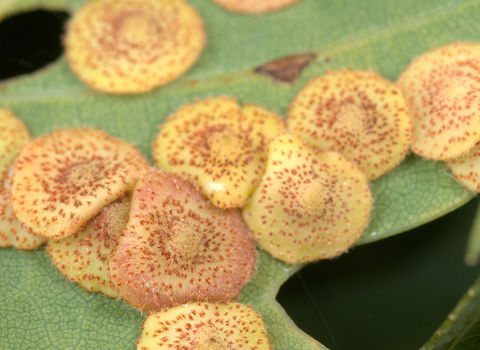
Common Spangle Galls ©Brian Eversham
Common spangle gall wasp
The common spangle gall wasp produces a small, disc-shaped growth, or 'gall', on the undersides of oak leaves. Inside the gall, the larvae of the wasp feed on the host tissues, but cause little damage.
Scientific name
Neuroterus quercusbaccarumWhen to see
January to DecemberSpecies information
Category
Statistics
Diameter of gall: 4mmCommon.
